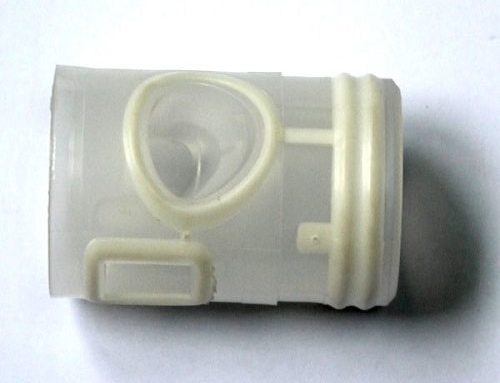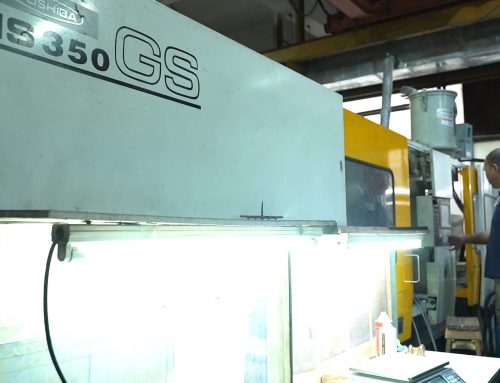First, mold classification:
Classified by hardness: soft plastic molds, hard plastic molds (quenching treatment).
Classified by quality level: Level 1 Level 3 Level 3 Level 4
Classified by difficulty: Class A, Class B, Class C, Class D
Classified by die size: extra large, large, medium, small
Second, definition of soft plastic molds and hard plastic molds:
1, mold hardness: soft plastic molds, hard plastic molds
1) Soft plastic molds: hardness is below 44HRC. After steel used in inner mold is bought by mold manufacturer, it can be used without heat treatment. Production life is less than 500,000 times which is called soft plastic molds. For example, inner module is made of P20 steel, ace, 420H steel, aluminum, beryllium copper, etc.
2) Hard plastic molds: hardness is above 44HRC, steel used in inner mold is bought and processed by mold manufacturer, divided into two roughing and finishing, then roughened and quenched such as carburizing and quenching, to meet requirements of use. This kind of injection mold is called a hard plastic mold. After rough machining, machining allowance of about 0.2 is retained. After quenching treatment of plastic molding service, workpiece will be deformed to prevent finishing from meeting workpiece requirements. Production life is more than 50 to 1 million times. Such as inner mold is made of H13 steel, 420 steel, S7 steel, etc., hardness of mold is determined according to clamping stress of parting surface. When mold clamping stress of parting surface is 3.5T/in2 or less, pre-hardened mold steel with a hardness of HRC45 or less can be selected. When mold clamping stress of parting surface is 5T/in2 or more, hardness of selected steel must be HRC45 or more.
In addition to large difference in life of mold, soft plastic molds and hard plastic molds generally have no difference in plastic molded products, manufacturing cost of soft plastic molds is low, while manufacturing cost of hard plastic molds is high. Soft models are widely used in Asian countries, including Taiwan, Japan, East Asia and other countries and regions. Hard plastic molds are most widely used in Europe and North America. For some plastic molded products, it is necessary to make a hard plastic mold to have a long life, such as a mold containing glass fiber raw material is injection molded.
Third, mold quality level: one level two level three level four level
First grade mold quality
1 . Mold: Must have a mold opening of one million or more.
This is first-class mold. Customer must make the best mold with the best materials and accessories.
2 . Requirements for the first-level mold are as follows:
(1) Detailed molding design (with computer graphics and materials);
(2) Hardness of mold blank must be at least HB280;
(3) Mold must be at least hard HRC50, and all rows and accessories must be hardened;
(4) It is necessary to have a thimble in the middle of pipe;
(5) Position must have wear-resistant pieces;
(6) Temperature control monitor shall be installed in the mold or row according to feasibility;
(7) It is recommended to use all cooling channels for nickel plating (ELECTROLESS NICKEL PLATING) to prevent rust and easy cleaning;
(8) Parting line must be added with a positioning lock.
Secondary mold quality
1 . Mold: It must have a number of mold opening times of 500,000 or more.
This is a second-class and high-quality mold. Good materials and accessories must be used in plastic molding service, and tolerances of molds also have certain standards (size accuracy). This model also requires a good quality.
2 . Requirements for secondary mold are as follows:
(1) It is recommended to do detailed molding design
(2) Hardness of mold blank must be at least HB280
(3) Mold must be at least hard HRC48, all rows and accessories must also require heat treatment
(4) Temperature control monitor shall be installed in the mold or row according to feasibility.
(5) Parting line must be added with positioning lock
Three-level quality mold
1 . Mold: It must have a number of mold opening times of 250,000 or more. This is a general mold requirement.
2 . Requirements for the third-level mold are as follows:
(1) Suggested molding design
(2) Hardness of mold blank must be at least HB165
(3) Mold must be at least HB280
(4) In addition to above three basic requirements, others are considered as additional requirements for selectivity.
Four-level quality mold
1, Mold: Requires about 10,000 times. This is a low-production mold. Generally speaking, there is no special requirement, but quality of mold still needs to be accepted by customers.
2, Requirements of four-level mold are as follows:
(1) Suggested molding design
(2) Mold base may be ordinary copper or aluminum
(3) Mold meat can be made of aluminum or steel with customer’s consent.
(4) In addition to above three basic requirements, others are considered as additional requirements for selectivity.
Fourth, mold difficulty: A level B level C level D level
Class A: There are multiple rows and multiple slanting tops, such as multiple splitting, core pulling and rotating core pulling.
Class B: There are multiple (two to four) row positions, two to three types of slanting tops, and a mold structure such as pumping core is more complicated.
Class C: Simple fine nozzle into plastic mold, one or two rows, inclined top and other general structure of mold.
Class D: Dashuikou mold, two-plate mold, simple structure without straight line, no inclined top.
Five, mold size: extra large large medium small
Extra large: mold with a width of 800mm or more.
Large: Molds with a width between 600 and 800 mm (excluding 800).
Medium: Mold with a mold width between 350 and 600 (excluding 600).
Small: A mold with a mold width of 350 or less.




